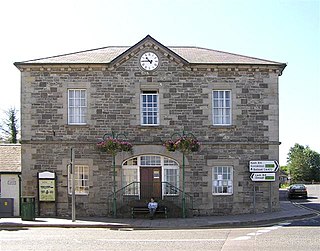
Luton is a town and unitary authority with borough status, in Bedfordshire, England. The 2021 census gives the population of the Borough of Luton as 225,262 and the population of the Luton/Dunstable urban area as 286,450.

Bedfordshire is a ceremonial and historic county in the East of England. It is bordered by Northamptonshire to the north, Cambridgeshire to the north-east, Hertfordshire to the south-east, and Buckinghamshire to the west. The largest settlement is Luton.

Ampthill is a town and civil parish in Bedfordshire, England, between Bedford and Luton, with a population estimate of 8,100. It is administered by Ampthill Town Council. The ward of Ampthill which also includes Maulden and Clophill has an estimated population of 13,280 and is administered by Central Bedfordshire Council.

Houghton Regis is a market town and civil parish in the Central Bedfordshire district of Bedfordshire, England.
Luton is a town located in the south of Bedfordshire, England.

Dunstable is a market town and civil parish in Bedfordshire, England, east of the Chiltern Hills, 30 miles north of London. There are several steep chalk escarpments, most noticeable when approaching Dunstable from the north. Dunstable is the fourth largest town in Bedfordshire and along with Houghton Regis forms the westernmost part of the Luton/Dunstable urban area.

The Corn Exchange is an events and concert venue located on St Paul's Square in the Castle area of Bedford, Bedfordshire, England. The structure, which was commissioned as a corn exchange, is a Grade II listed building.

The Corn Exchange is a commercial building on The Payment in St Ives, Cambridgeshire, England. The structure, which is currently used as an events venue, is a Grade II listed building.

Myrtle Grove, also known since 1926 as Bingley Town Hall, is a municipal building in Myrtle Park, Bingley, West Yorkshire, England. The building, which was the headquarters of Bingley Urban District Council, is a Grade II listed building.

Seaton Town Hall was a municipal building in Fore Street, Seaton, Devon, England. The former Town Hall, which was the meeting place of Seaton Urban District Council, currently hosts The Gateway Theatre, providing live music, theatre, cultural and community events.

Witham Town Hall is a municipal building in Newland Street, Witham, Essex, England. The building, which is the meeting place of Witham Town Council, is a Grade II listed building.

The Town House is a municipal building in Union Street in Yeovil, Somerset, England. The building, which is the meeting place of Yeovil Town Council, is a Grade II listed building.

The Old Town Hall is a municipal structure in Castle Street, Lisburn, County Antrim, Northern Ireland. The structure, which is used as a constituency office by the Democratic Unionist Party, is a Grade B2 listed building.

Ederney Town Hall, also styled as Ederney Townhall, is a municipal structure in Market Street, Ederney, County Fermanagh, Northern Ireland. The structure, which is used as a community events venue, is a Grade B1 listed building.

The Old Town Hall is a municipal building in East Street in the Middlehaven area of Middlesbrough, North Yorkshire, England. The structure, which has been vacant since 1996, is a Grade II listed building. The adjacent clock tower is separately listed.

Wick Sheriff Court is a judicial structure in Bridge Street, Wick, Caithness, Scotland. The structure, which remains in use as a courthouse, is a Category B listed building.

Hamilton Sheriff Court is a judicial building in Almada Street, Hamilton, South Lanarkshire, Scotland. The building, which continues to serve as the local courthouse, is a Category A listed building.

The Corn Exchange is a commercial building in Market Street, Witney, Oxfordshire, England. The structure, which is used as a public events venue, is a Grade II listed building.

The Old Town Hall is a former municipal building in the High Street, Biggleswade, Bedfordshire, England. The structure, which most recently operated as a restaurant, is a Grade II listed building.




















